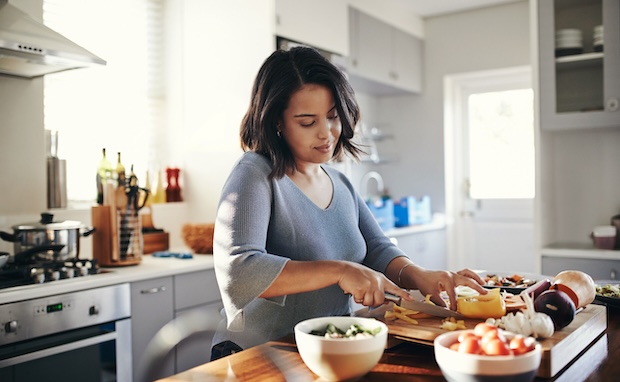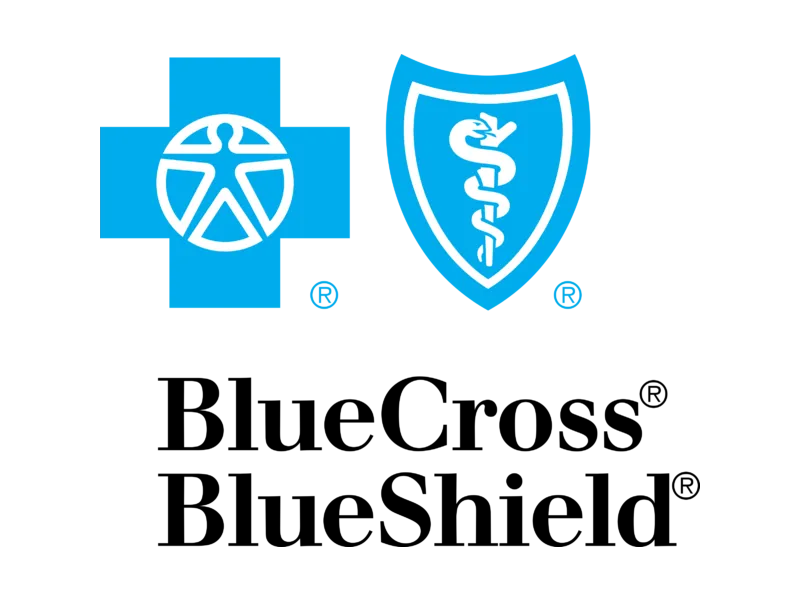Key Points
- A pancreatitis diet focuses on low-fat, easy-to-digest foods to give your pancreas a rest and reduce inflammation.
- Key principles include choosing lean proteins, simple carbohydrates, and antioxidant-rich fruits and vegetables while strictly avoiding alcohol, fried foods, and high-fat items.
- Chronic pancreatitis can affect nutrient absorption, making it important to focus on fat-soluble vitamins (A, D, E, K) from low-fat sources.
Pancreatitis can be an overwhelming diagnosis. The pain from an acute flare-up is already intense, and finding a path forward can be overwhelming in the midst of it all. You’re likely wondering what you can eat to ease your symptoms and find some relief.
You're not alone in feeling this way. The good news is that what you eat is one of the most powerful tools you have to manage pancreatitis, reduce symptoms, and support your body’s healing process. Shifting your diet gives your pancreas a much-needed break, allowing the inflammation to calm down.
This guide is here to take the guesswork out of it. We’ll walk you through a simple, seven-day meal plan designed specifically for pancreatitis, packed with foods that are gentle on your system.
Why does diet matter with pancreatitis?
Pancreatitis is an inflammation of the pancreas. The pancreas is a small organ with a big job: it produces enzymes to help you digest food, as well as hormones like insulin to manage your blood sugar.
When the pancreas gets inflamed, those powerful digestive enzymes can activate while they're still inside the organ, causing irritation, pain, and damage.
“With any condition related to the pancreas, most clients assume that carbohydrates are what they need to avoid or limit,” says Emily Bixler, RD. “However, most often, the macronutrient to limit is fat, so we need to work on learning how much their body can tolerate at one time, and if they can tolerate it better with a certain amount of fiber.”
Eating high-fat foods makes the pancreas work overtime to produce the enzymes needed to break them down. When your pancreas is already inflamed, this extra work can trigger or worsen a painful flare-up.
By switching to a low-fat diet, you reduce the demand on your pancreas. Think of it like giving a sprained ankle a rest – you wouldn't go for a run with a hurt ankle! A pancreatitis-friendly diet is how you let your pancreas rest and recover.
Key dietary principles for pancreatitis
Before jumping into the meal plan, let’s cover the basic rules of the road.
“I start by limiting foods that contain saturated fat like higher-fat dairy or red meat that isn’t lean,” says Emily Bixler, RD. “I also suggest increasing foods that contain fiber, like fruits, vegetables, and whole grains — and increasing water intake alongside that to prevent constipation. Lastly, I encourage more frequent but smaller meals to maintain weight and get all the necessary nutrients.”
These principles are the foundation of a diet that supports pancreatic health.
Stick to low-fat foods
This is the most important rule. During and after a flare-up, your fat intake should be very low. The goal is to choose foods with less than 3 grams of fat per serving. This means avoiding fried foods, fatty meats, full-fat dairy, and heavy oils.
Focus on lean proteins
Protein is essential for healing and maintaining muscle, but where it comes from matters too. Opt for lean choices like skinless chicken breast, turkey, fish (like cod or haddock), tofu, and beans. These provide the protein you need without the high-fat content that can trigger symptoms.
Choose simple, easy-to-digest carbohydrates
During a flare-up, even high-fiber foods can sometimes be hard to digest. While whole grains are usually recommended for overall health, you might find that simpler carbs like white rice, plain pasta, and white bread are easier on your system initially. As you heal, you can gradually reintroduce more fiber.
Pay attention to micronutrients
When your body isn't breaking down fat properly, it can also struggle to absorb the fat-soluble vitamins – A, D, E, and K. Chronic pancreatitis puts you at a higher risk for these deficiencies. Focus on getting these nutrients from low-fat sources, like leafy greens (for vitamin K), sweet potatoes and carrots (for vitamin A), and fortified low-fat dairy or dairy alternatives.
A note on beneficial fats
While high-fat foods are off-limits, not all fats are created equal. Some research suggests that medium-chain triglycerides (MCTs), a type of fat found in coconut oil, may be easier to digest. MCTs are absorbed differently and don't require pancreatic enzymes, which could make them a useful energy source for some people with chronic pancreatitis. It's best to discuss this with a dietitian before adding them to your diet.
Hydration is non-negotiable
Staying hydrated is critical, especially during an acute flare-up when you can lose fluids. Water is your best friend. Clear broths, herbal tea, and diluted fruit juices are also good options. Dehydration can increase inflammation and make you feel much worse.
Your 7-day pancreatitis-friendly meal plan
This meal plan is designed to be a starting point. It focuses on simple, low-fat, and gentle foods. Remember to eat small, frequent meals throughout the day rather than three large ones, as this can be easier on your pancreas.
Day 1
- Breakfast: ½ cup oatmeal made with water, topped with a handful of blueberries
- Lunch: Turkey sandwich on white bread with lettuce and a thin spread of mustard; ide of applesauce
- Dinner: 3 oz baked cod with 1 cup of steamed white rice and ½ cup of steamed carrots
- Snack: A small banana
Day 2
- Breakfast: A fruit smoothie made with ½ cup non-fat Greek yogurt, ½ banana, and a handful of spinach
- Lunch: Leftover baked cod and rice
- Dinner: 3 oz skinless, baked chicken breast with a small baked sweet potato (no butter) and steamed green beans
- Snack: Carrots and hummus
Day 3
- Breakfast: ½ cup cream of rice cereal with a small amount of honey or maple syrup
- Lunch: A large spinach salad with grilled chicken strips, cucumber, bell peppers, and a fat-free vinaigrette
- Dinner: 1 cup lentil soup with a slice of toast
- Snack: A handful of grapes
Day 4
- Breakfast: Scrambled egg whites (2-3) with a slice of white toast
- Lunch: Leftover lentil soup
- Dinner: Turkey meatballs (made with lean ground turkey and breadcrumbs) with plain pasta and a simple tomato sauce
- Snack: Canned peaches or pears in their own juice
Day 5
- Breakfast: ½ cup non-fat cottage cheese with a side of cantaloupe
- Lunch: Leftover turkey meatballs and pasta
- Dinner: 3 oz baked tilapia with ½ cup of quinoa and steamed asparagus
- Snack: A small apple
Day 6
- Breakfast: Oatmeal made with water, topped with sliced peaches
- Lunch: A cup of chicken noodle soup (choose a low-fat variety) with saltine crackers
- Dinner: Tofu and vegetable stir-fry (use water or broth instead of oil) with ½ cup of brown rice. Include broccoli, bell peppers, and carrots
- Snack: Unsweetened applesauce
Day 7
- Breakfast: A smoothie with non-fat kefir, a handful of mixed berries, and a spoonful of protein powder (optional)
- Lunch: Leftover tofu and vegetable stir-fry
- Dinner: A simple vegetable soup made with clear broth and plenty of non-starchy vegetables like zucchini, carrots, and spinach
- Snack: A rice cake with a thin layer of jam
Foods to eat and foods to avoid with pancreatitis
Keep these lists handy for grocery shopping and meal planning.
Foods to include
- Lean proteins: Skinless poultry, fish (cod, haddock, tuna in water), tofu, beans, lentils, and egg whites
- Fruits: Berries, bananas, apples, melons, and canned fruit in juice
- Vegetables: Leafy greens (spinach, arugula, kale), carrots, sweet potatoes, zucchini, cucumbers, and bell peppers
- Low-fat grains: White rice, pasta, oatmeal, cream of wheat, and white bread – as you feel better, you can try whole grains like brown rice and whole-wheat bread
- Low-fat/non-fat dairy: Skim milk, non-fat yogurt, non-fat cottage cheese, and kefir
- Beverages: Water, clear broths, herbal tea, and non-fat milk
Foods to limit or avoid
- High-fat meats: Bacon, sausage, ribs, steak with marbling, and chicken or turkey with the skin on
- Fried foods: French fries, fried chicken, onion rings, and donuts
- Full-fat dairy: Whole milk, cheese, butter, cream, and full-fat yogurt or ice cream
- Oils and fatty condiments: Butter, margarine, mayonnaise, and heavy salad dressings
- Nuts and seeds: While healthy, they are high in fat and may be difficult to tolerate, especially during a flare-up.
- Processed and packaged foods: Many are high in hidden fats and preservatives – always check the label.
- Alcohol: Alcohol is a major cause of both acute and chronic pancreatitis and must be avoided completely
Final Thoughts
Managing pancreatitis with diet can feel restrictive at first, but it’s a crucial step toward feeling better and preventing future flare-ups. This seven-day meal plan is a template to show you that eating for your pancreas can still be varied and satisfying.
The most important thing is to listen to your body. What works for one person might not work for another. If a certain food causes discomfort, avoid it. As you start to heal, you can slowly and carefully reintroduce other foods.
You don't have to navigate this journey alone. Working with a registered dietitian can make a world of difference. They can help you create a personalized meal plan that ensures you're getting the nutrients you need, help you identify trigger foods, and provide strategies for long-term success.
Frequently Asked Questions
What are the first signs of pancreatitis?
The most common sign of acute pancreatitis is a sudden, severe pain in the upper abdomen that can radiate to your back. It often feels worse after eating. Other symptoms can include nausea, vomiting, fever, and a rapid pulse.
Can you eat eggs with pancreatitis?
Yes, but it's best to stick to egg whites. Egg yolks are high in fat, which can be difficult for the pancreas to process. Egg whites, on the other hand, are a great source of lean protein and are generally well-tolerated.
What is a good breakfast for pancreatitis?
A good breakfast is low in fat and easy to digest. Oatmeal made with water or skim milk, cream of rice, scrambled egg whites, or a fruit smoothie with non-fat yogurt are all excellent choices that provide energy without straining your pancreas.
How long does it take for the pancreas to heal?
Healing time varies depending on the severity. Mild acute pancreatitis may resolve within a week with rest and dietary changes. More severe cases can take longer and may require hospitalization. Chronic pancreatitis is a long-term condition that requires ongoing management rather than a one-time "healing" process.
The views expressed by authors and contributors of such content are not endorsed or approved by Fay and are intended for informational purposes only. The content is reviewed by Fay only to confirm educational value and audience interest. You are encouraged to discuss any questions that you may have about your health with a healthcare provider.
Sources
Fay Nutrition has strict sourcing guidelines and relies on peer-reviewed studies, academic research institutions, and medical associations. We avoid using tertiary references.
- Alcoholic Pancreatitis - StatPearls
- The role of high fat diet in the development of complications of chronic pancreatitis - Clinical Nutrition by ScienceDirect
- Fat malabsorption in pancreatic cancer: Pathophysiology and management - Nutrition in Clinical Practice | ASPEN
- Pancreatitis and Nutritional Deficiencies - Mission:Cure











